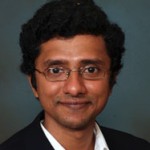Dietary Monitoring
Wearable Dietary Monitoring

The Problem:
Unhealthy dietary habits affect all ages, genders, and demographics, and is associated with chronic conditions such as obesity and diabetes. In the United States, statistics show that 1 in 3 adults are affected by obesity and up to 29 million (~9% of the population) are affected by diabetes. Manual self-report approaches which are often expensive, burdensome and up to 50% inaccurate, are the current gold standard for dietary monitoring. Therefore, the potential to objectively monitor dietary behavior in free-living conditions is of high interest in the research community and society at large.
Our Solution:
We propose a multimodal wearable system for monitoring energy flux in free-living conditions by non-invasively tracking short-term fluctuations of body weight and body composition. Unlike commonly explored efforts towards dietary monitoring, body weight and body composition can be monitored non-invasively and potentially provide relevant information about the effect of intake on the body. Our recent exploratory study found, as expected, that short-term body weight fluctuation is directly related to activities of daily living including intake and physical activity. Therefore, body weight is a relevant measurable parameter for quantifying portion size and intake amount.


Team

Temi Prioleau
Postdoctoral Fellow
ECE, Rice University

Dr. Ashok Veeraraghavan
Associate Professor
ECE, Rice University

Dr. Ashutosh Sabharwal,
Professor
ECE, Rice University
Paper
1) Prioleau, Y. Heng, A. Veeraraghavan, A. Sabharwal, “Exploring the effect of food intake and physical activity on body weight,” IEEE Biomed & Health Informatics (BHI), 2017.
2) T. Prioleau, E. Moore, M. Ghovanloo, “Unobtrusive and wearable systems for automatic dietary monitoring,” IEEE Trans on Biomed Eng (TBME), 2017.
